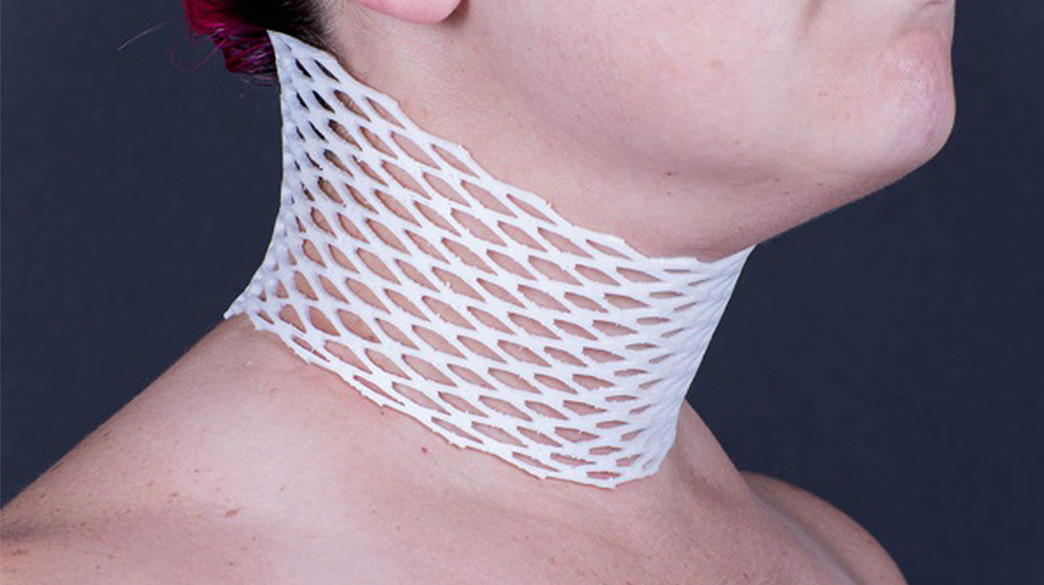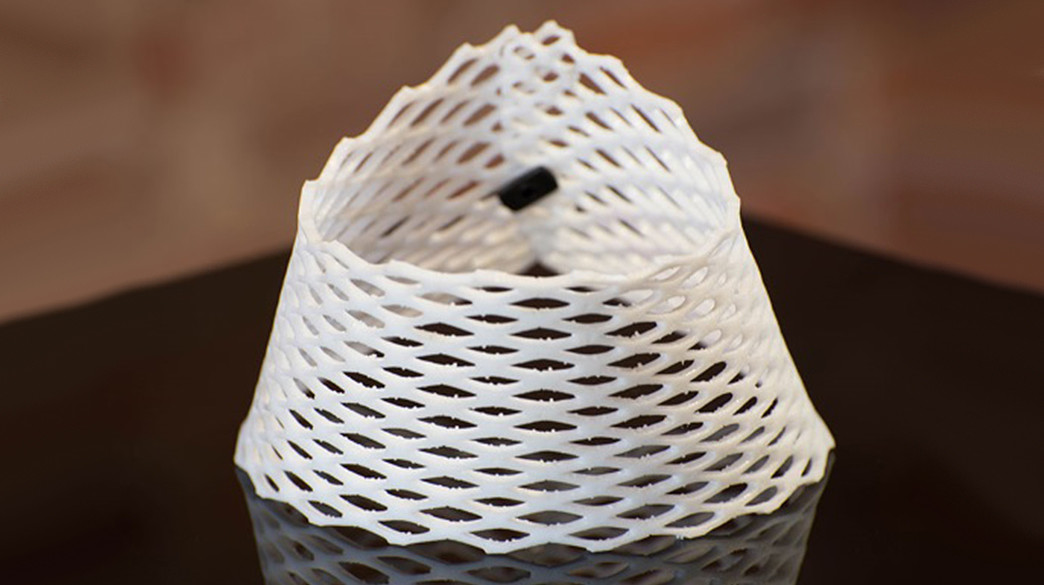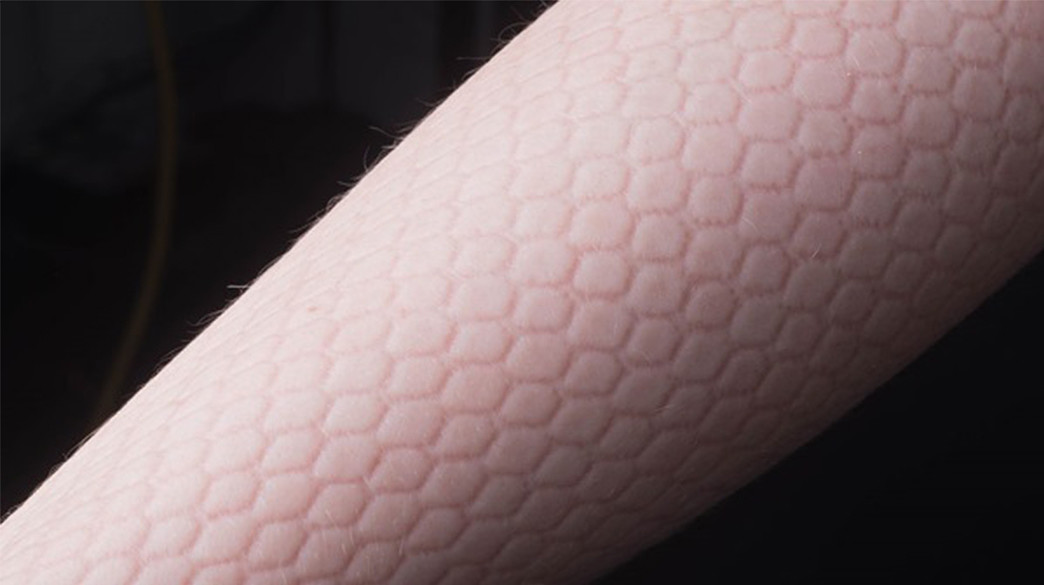
Combining fashion and art into one, truly makes you wonder about the nature of shapes and objects. Does something exist even if it disappears after 15 minutes? We’ve already known for some time that 3D printing can be used for far more than just manufacturing; it’s seemingly endless number of potential applications are even starting to change the way we perceive objects and shapes, the way we understand creation and ownership.
While this hasn’t yet resulted in widespread societal changes, expressive artists are increasingly embracing 3D printing as a legitimate instrument to define shapes and convey messages, while even fashion is already exploring new ways to define clothing . And after all, art is always a few decades ahead of the rest of us.
{skin}-D.E.E.P. is a project by the collaborative arts duo //benitez_vogl, and is all about the creation of ‘temporary biomimetic skin patterns’. Or, as a laymen might describe it, temporarily mimicking patterns that exist in nature on human skin – in this case the intricate patterns on a snake’s skin.
The artistic duo //benitez_vogl consists of Margarita Benitez, a Fashion Technologist and Assistant Professor at Kent State University’s Fashion School, and Markus Vogl, Assistant Professor at the University of Akron. Together, they have been exploring the potential of open-source tools like 3D printing for artists and fashion designers, and its consequences for the human form. Their research recently won the ‘aesthetic design’ jury award at the International Symposium on Wearable Computing’s Design Exhibition in Seattle.
As part of their latest project, they have created a series of 3D printed exoskeletal accessories that mimic the properties and patterns of snakeskin and can be worn on the arms, legs and neck. This will leave a temporary impression of that pattern onto your skin, as the two artists explained to 3ders.org,
After wearing these unique pieces of exoskeletal jewellery, the artificial snakeskin is removed, leaving a negative imprint of it on the epidermis of the skin.
‘The dermis reestablishes the smooth form of the human skin as it heals itself within the hour, erasing the ephemeral imprint, symbolically representing rebirth and renewal.’


These snake-skin exoskeletons have been created using 3D printing, a manufacturing technology ideal for such intricate and unique web-like patterns. Benitez and Vogl designed them using Rhino, Grasshopper and Simplify 3D software, before printing them on a re3D Gigabot printer using PLA (for the arm and leg prostheses) and Polyflex (neck) filaments. Accessories of this size obviously took a while to print, ranging from 14 to 30 hours depending on the desired quality size. As they explained, the prints’ quality was high enough to be worn upon cooling and in the neck pieces case, flexible enough to be placed on with some ease.
With their intriguing {skin}-D.E.E.P. project, Benitez and Vogl hope to inspire people to think about the philosophical consequences of imprinting humans with natural patterns. Indeed, they hope these textured, ephemeral patterns ‘will act as a larger philosophical basis to conduct a discussion about the possibilities of blending nature with manmade objects via Biomimicry.’
They are therefore also intending to continue exploring ephemeral patterns and the consequences of impressing humans with nature. Additional forms, ‘such as temporal patterns for the face, as that particular area is sensitive to long term manipulation’ are already being looked into. Perhaps 3D printing will fundamentally change the way we perceive our own connection with nature around us?
Original article : 3ders.org